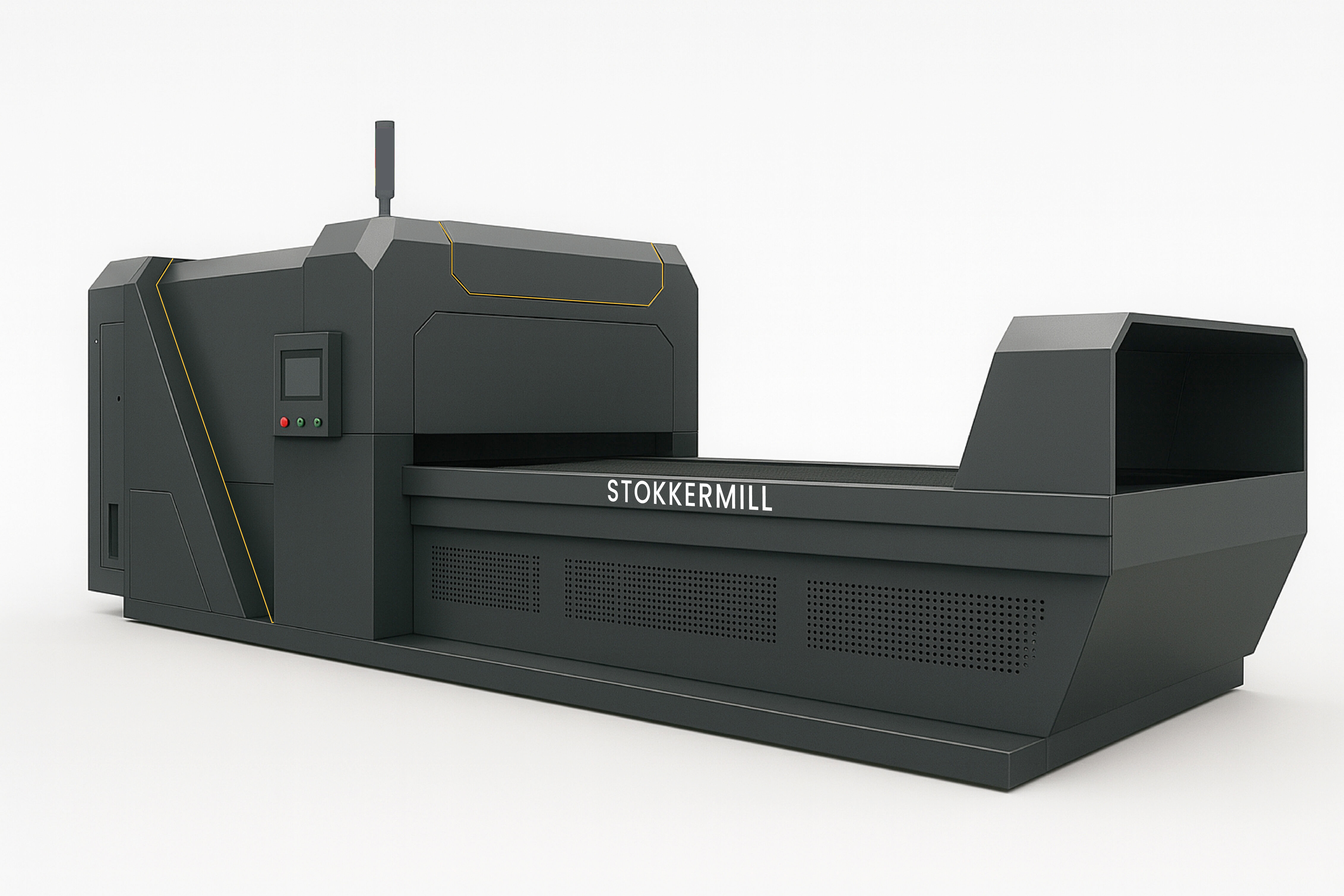XRAY selector

X-ray sorting machines operate by exploiting the atomic density and material composition of objects. Unlike optical or color systems, which rely on external appearance, X-ray technology allows you to "see inside" materials, ensuring extremely accurate separation.
1. Material feeding:
The input material (such as plastic, metal, glass, or mineral fragments) is distributed evenly on a conveyor belt or vibrating chute, ensuring a constant and regular flow.
2. X-ray irradiation
An X-ray source emits a beam that passes through moving materials. Each particle absorbs or transmits X-rays differently, depending on its density and atomic number.
3. Detection via sensors
On the opposite side, a detector measures the intensity of the transmitted X-rays. The data collected is converted into a digital image or analytical signals that identify the nature of the material (e.g., aluminum vs. PVC, glass vs. stone).
4. Data processing
High-speed analysis software processes data in real time, comparing it with predefined parameters or thresholds.In a matter of milliseconds, it determines whether the fragment belongs to the "good" or "reject" category.
5. Pneumatic or mechanical separation
At the ejection point, compressed air jets or mechanical pistons automatically divert unwanted materials, completing the selection process.
Distinguishable materials
X-ray machines can identify visually similar materials, including:
• Plastics containing heavy metals (PVC, brominated plastics, etc.) compared to pure plastics;
• Aluminum, magnesium, and zinc;
• Lead glass compared to ordinary glass;
• Minerals with different metal concentrations;
• Electronic components or fragments of solar panels containing rare metals.
Advanced separation of metal fractions
The new generation of Stokkermill optical and X-ray separators is designed to intervene in the final stages of the process, where traditional technologies such as induced current separators are unable to guarantee the necessary selectivity. These systems allow complex and fine fractions to be identified and separated, such as fragments of electronic boards, pieces of copper cable, mixed plastic and metal components, which in the past had to be sorted manually. Thanks to new-generation multispectral sensors and high-resolution X-ray analysis, Stokkermill separators achieve up to 99.9% purity in aluminum and copper fractions, minimizing processing costs and personnel requirements.
Key benefits
• Up to 99% selection accuracy;
• Non-visual detection, effective even with dirty or colored materials;
• Higher purity of output material and reduced refining costs;
• Full automation and high operating speed.
























